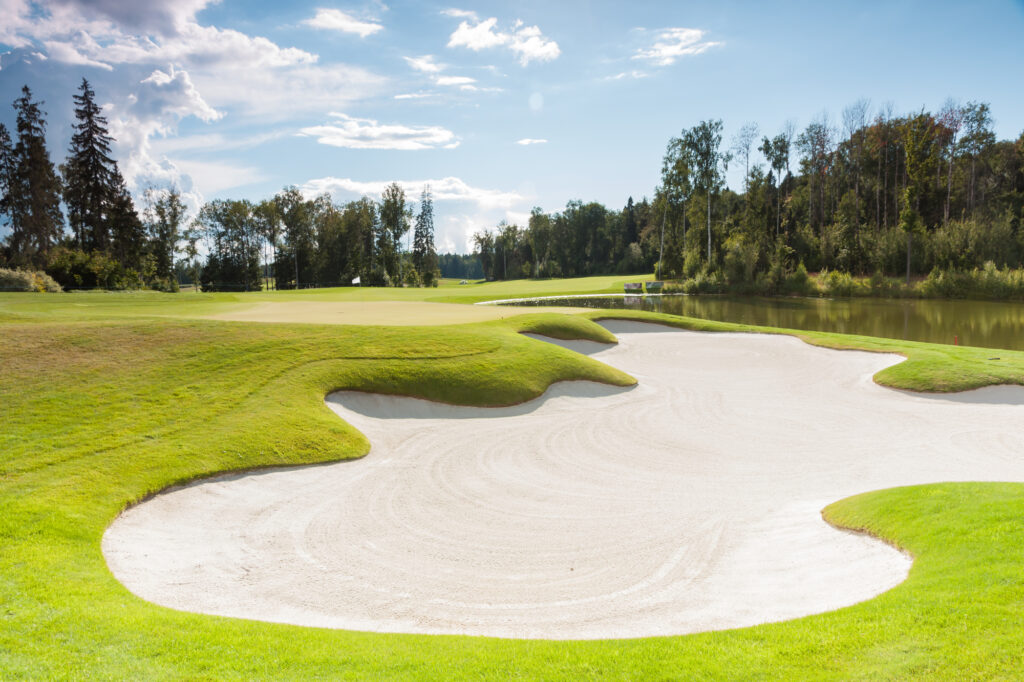When playing a round of golf, few things are more frustrating than hitting a bunker shot only to have the ball behave unpredictably. The secret to consistent, playable bunkers and smooth green lies in the sand itself. Sand texture plays a crucial role in how the game unfolds. In the blog, we’ll explore why the right sand texture can make or break performance on the golf course.
What is Sand Texture?
Sand texture refers to the physical characteristics of sand, including grain size, shape, and distribution. Grain size can vary from coarse to fine, with coarser grains being larger and rougher, while finer grains are smaller and smoother. Coarse sand is typically used in areas requiring better drainage, while fine sand is preferred for smooth surfaces like greens. Medium sand provides a balance for playability and maintenance. Uniformity in sand texture across a golf course is crucial for consistent ball roll, bounce, and shot control. Irregular sand textures can lead to unpredictable play and make bunkers or greens hard to manage.

The Role of Sand in Golf Course Design
Sand plays a vital role in golf course design because it impacts performance and aesthetics. It’s used in bunkers, greens, and fairways to influence playability and surface consistency. In bunkers, coarser sand is preferred for better drainage and easier maintenance and ensures players can effectively control their shots. On greens, finer sand promotes smooth ball roll and aids turf growth. Sand also stabilizes soil to improve the root structure of grass and enhance the durability of high-traffic areas. Proper sand texture is essential for maintaining the integrity of these areas, as uneven or poorly selected sand can lead to drainage issues, turf damage, and unpredictable play. Regular sand maintenance keeps these surfaces consistent and playable.
How Sand Texture Affects Playability
Here are the ways that sand texture affects playability:
- Ball Roll: On greens, the texture of the sand affects how smoothly the ball rolls. Fine sand is typically used to create a smooth, even surface, which allows the ball to maintain a consistent speed and direction. If the sand is too coarse or uneven, it can cause the ball to slow down or veer off course, making putts more challenging and unpredictable for players.
- Ball Bounce: In bunkers, the texture of the sand influences how the ball bounces upon landing. Coarser sand tends to provide more firmness, leading to higher bounces when the ball hits the surface. Conversely, finer sand absorbs more impact, which causes the ball to settle quickly. This affects the player’s strategy, as they must anticipate how the ball will react depending on the sand’s texture.
- Shot Control: Softer, finer sand gives golfers more control over their shots, especially in greenside bunkers. Fine sand allows players to more easily generate the lift needed to get the ball out of the bunker. Coarser sand, on the other hand, can make it harder to control the ball, requiring more precision in striking to avoid “chunking” the shot or hitting it too far.
- Ease of Recovery: The texture of the sand directly impacts how difficult it is to recover from a bunker. Coarser sand provides a firmer surface, making it easier for players to dig under the ball and escape the bunker. Fine sand, while offering more control, can be harder to recover from if it’s too soft, as players risk their club getting stuck or taking too much sand with the shot.
- Spin on Shots: Sand texture also plays a role in generating spin on bunker shots. Finer, consistent sand allows players to impart more spin on the ball, which is critical for controlling the shot’s flight and stopping the ball on the green. Coarser or uneven sand can limit spin and make it harder to place the ball accurately, especially on approach shots from bunkers.

- Consistency of Play: Uniform sand texture across a course is essential for maintaining consistent play. When sand textures vary significantly from bunker or across greens, it can lead to unpredictable shot outcomes. Players need to adjust their technique and strategy based on the texture, which disrupts their rhythm and adds an element of unpredictability to the game.
- Drainage Impact: Coarse sand improves drainage in bunkers, ensuring they remain firm and playable even after heavy rain. Fine sand tends to compact more easily when wet, leading to water retention and making the surface muddy or hard. Proper drainage helps maintain the playability of the course, preventing bunkers from becoming too soft or unmanageable during wet conditions.
- Player Confidence: Consistent sand texture throughout the course gives players confidence in how their ball will react. Knowing that the sand will behave predictably allows golfers to approach their shots with more certainty and improve their overall performance. Inconsistent or poorly maintained sand can lead to doubt and hesitation, and negatively impact their decision-making on the course.
Choose Consolidated Aggregates for Quality Golf Sands
Consolidated Aggregates offers high-quality golf sands designed for optional playability, drainage, and turf health. Our sands are carefully processed to meet the specific needs of golf courses, from bunkers to greens. In addition to golf course sands, we provide a range of other products, including concrete and masonry sands, to help customers across various industries meet their material needs with reliable and consistent supplies. Contact us to learn more about our products.


Follow Us